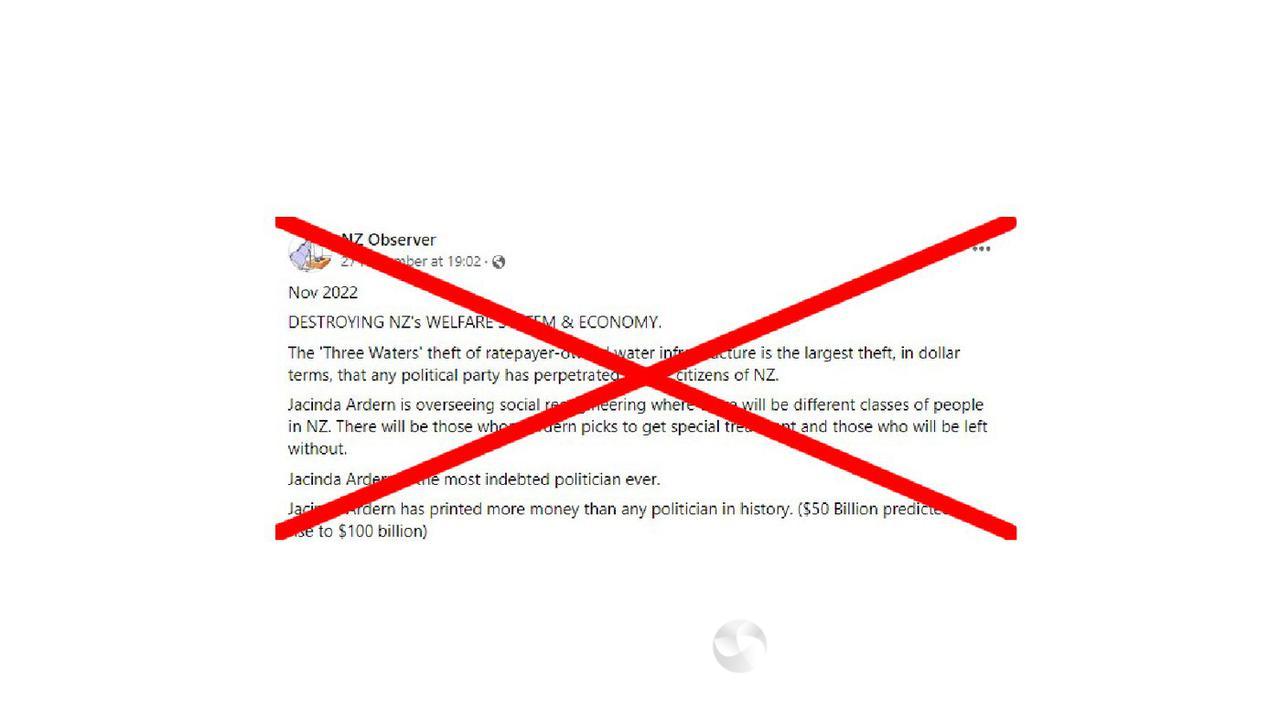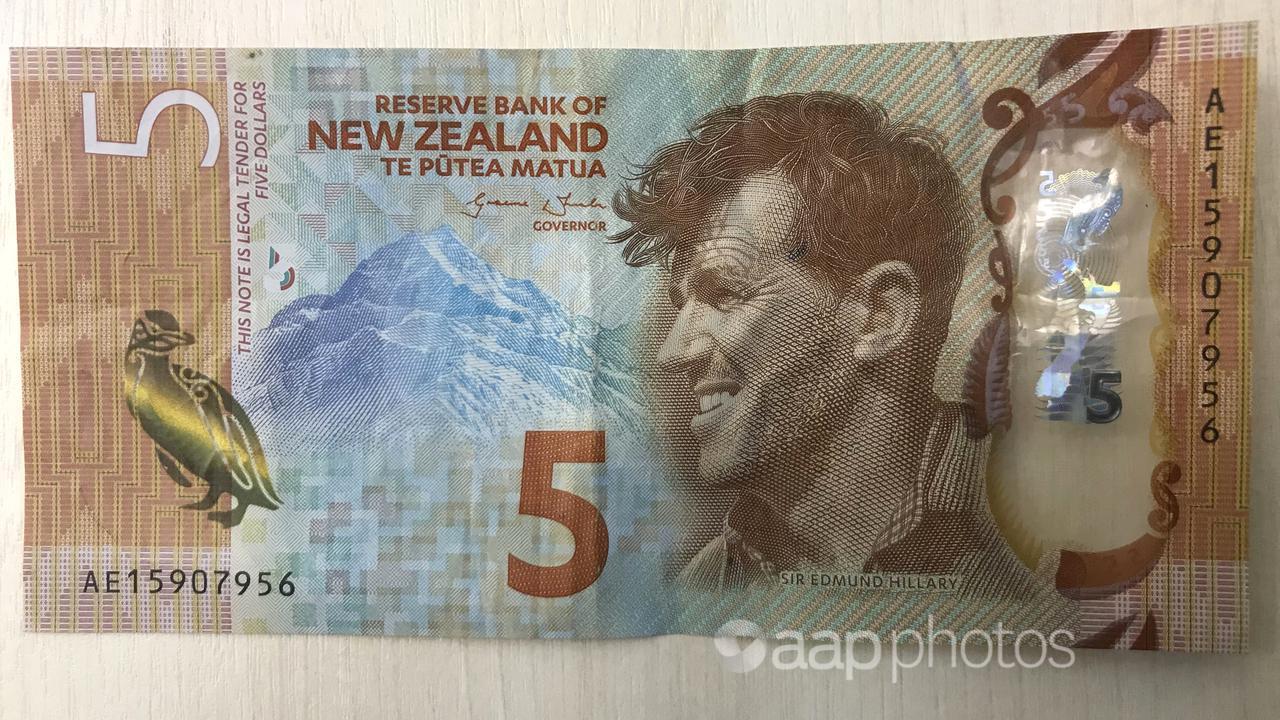Various Facebook posts from a New Zealand account claim the country’s Prime Minister Jacinda Ardern has printed more money than any politician in history.
The NZ Observer account has posted numerous times making the claim or variations of it – see examples here, here, here and here.
In some posts, the author qualifies that the amount is more than any NZ politician while on other occasions they simply state that she has printed more than any politician in history.
While figures suggest the increase in money supply has been greater during her time in office than any other NZ prime minister, it is false to say she has printed more than any politician in history.
More importantly, experts say it is wrong to say Ms Ardern is responsible for any decision to print money. Instead, that rests solely with the Reserve Bank of NZ.
The Reserve Bank has statutory independence from the government enabling “operational autonomy”.

Paul Dalziel, a professor of economics at New Zealand’s Lincoln University, confirmed to AAP FactCheck that Ms Ardern is not responsible for decisions related to money printing.
“The Reserve Bank of New Zealand has independently set monetary policy in pursuit of pre-determined Policy Targets Agreements (PTA) since a major reform of its Act in 1989. Thus, there is no basis to claims that Jacinda Ardern (or any other politician) has printed any money,” he said in an email.
Prof Dalziel said the government steers the direction of the Reserve Bank through the PTA. However, the decisions made to achieve those targets come solely from the Reserve Bank, which he said “makes that decision to the best of their ability on the information available at the time, independent of anything the government thinks they should be doing.”
He added: “Decisions about quantitative easing during the COVID response were made independently by the Monetary Policy Committee, and implemented by the Reserve Bank without any reference to politicians.”
Professor Martin Berka, head of the School of Economics and Finance at Massey University, said the claim shows “ignorance of basic economics”.
He added: “Governments do not print money, and certainly prime ministers do not print money, in the vast majority of countries on our planet.”
The post uses the term ‘money printing‘, which is a vague way of referring to an increase in money supply. The Reserve Bank of New Zealand and equivalent central banks around the world, can increase money supply through the purchase of bonds from the government and banks. During the COVID pandemic, the Reserve Bank of NZ did this through its Large Scale Asset Purchase (LSAP) program, spending a total of $NZ53 billion, with scope to spend up to $NZ100 billion.
This process is called quantitative easing, and it does increase the supply of cash in circulation in NZ, but it does so by increasing the liquidity of banks, changing their assets from securities into cash.

“The Reserve Bank of New Zealand’s Monetary Policy Committee is responsible for monetary policy decisions,” a representative for the Reserve Bank told AAP FactCheck in an email.
“The (Monetary Policy Committee) decided to implement a Large Scale Asset Purchase program of NZ government bonds in March 2020. In August of 2020 the MPC agreed to expand the program up to a maximum limit of $100 billion, to lower retail interest rates. This LSAP program is known internationally as quantitative easing. This is not ‘money printing’.”
In December, the Reserve Bank ended the LSAP program.
The claim that Ms Ardern has sway over money supply decisions aside, more has been ‘printed’ during the terms of office of other world leaders than the NZ prime minister.
Data on NZ’s narrow money supply shows the country has seen an increase of $NZ68.2 billion since Ms Ardern took office in October 2017. (The figure includes the LSAP program’s stimulus in response to COVID).
Under President Joe Biden the US has printed more than $US300 billion in cash in the past year. The Bank of England increased quantitative easing by hundreds of billions of pounds in 2020 alone while Boris Johnson was prime minister.
“There is no doubt that this COVID fiscal stimulus was large, but NZ indebtedness was relatively low prior to the pandemic, so there is no perceived sense in the markets that the borrowing used to finance the fiscal stimulus is risky,” Prof Berka said. “The real issue was the opportunity cost – was this large fiscal stimulus spent ‘wisely’, and in a targeted manner?”
AAP FactCheck has previously debunked false claims from the NZ Observer (see examples here and here).
The Verdict
The claim that NZ Prime Minister Jacinda Ardern has printed the most money of any politician is misleading.
While the increase in money supply has been greater under her prime ministership than any other NZ PM, that is not the case of all politicians worldwide.
More importantly, experts said Ms Ardern has no say on money supply decisions with responsibility resting with the Reserve Bank of NZ, which has statutory independence from the government.
Misleading – The claim is accurate in parts but information has also been presented incorrectly, out of context or omitted.
* AAP FactCheck is an accredited member of the International Fact-Checking Network. To keep up with our latest fact checks, follow us on Facebook, Twitter and Instagram.
All information, text and images included on the AAP Websites is for personal use only and may not be re-written, copied, re-sold or re-distributed, framed, linked, shared onto social media or otherwise used whether for compensation of any kind or not, unless you have the prior written permission of AAP. For more information, please refer to our standard terms and conditions.


















